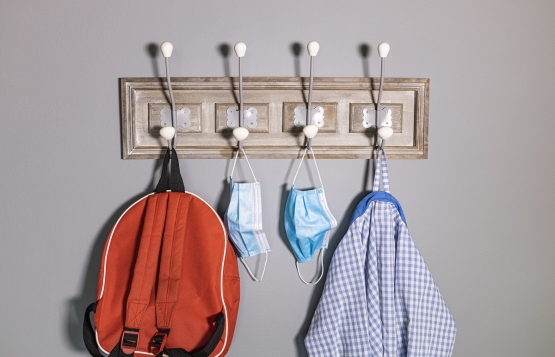
Schools should ignore Trump and DeVos and worry about winning parents’ trust instead
Figuring out how to safely reopen schools this fall was sure to be a hugely complicated logistical and academic challenge.

Figuring out how to safely reopen schools this fall was sure to be a hugely complicated logistical and academic challenge.

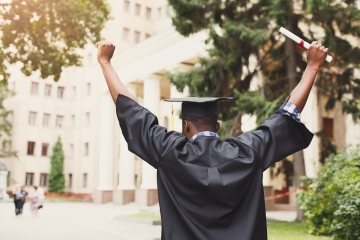
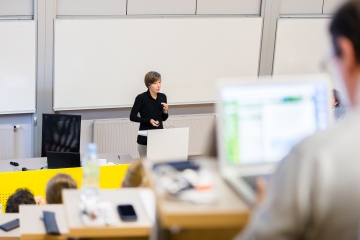
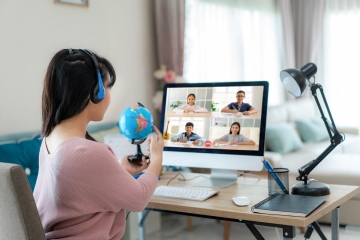
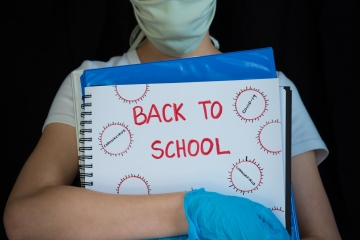
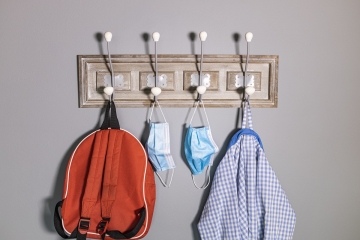
Figuring out how to safely reopen schools this fall was sure to be a hugely complicated logistical and academic challenge. Over the past week President Trump and Secretary DeVos made it exponentially harder by demanding that schools open five days a week at full capacity, never mind that social distancing on buses and classrooms would be impossible.
When told that doing so would violate his own administration’s CDC guidance, the president instinctively ordered the agency to change the guidance which, to the director’s credit, it apparently won’t do.
Once again, the president has made a difficult situation worse by making it all about him. He seems to want education leaders to prioritize what he sees as helpful to the economy (and his re-election) over the safety of children and teachers. Thankfully, our system of state-and-locally controlled schools means education officials can ignore his outbursts and focus on doing what’s right instead.
Savvy leaders know something that Trump clearly does not: the real decision makers in this situation are not government officials at any level. They are us parents, who get to decide whether to send our children back to school or not. Odd, isn’t it, that a president who touts “parental choice” hasn’t figured that out?
He and his team are correct that plenty of working parents are eager for their kids to return to school, both so they can return to work and so they can stop moonlighting as unskilled substitute teachers.
But we parents will only send our kids back if we’re confident that they’ll be safe. A series of summer surveys have shown a surprisingly large percentage of us saying we’re not yet comfortable doing so. With school districts wisely giving parents the option of remote learning if they prefer it, we could be looking at 30, 40, or even 50 percent of students in some schools electing at-home education.
It’s true that, under normal circumstances, most kids are better off in school than trying to learn from home; the nation’s pediatricians and many public health officials attest a functioning school is the best place for them to be, academically, socially, and emotionally. So if the White House wants parents to choose to send their kids back, the priority should be convincing us that schools will be safe as well as functional.
But here’s the rub: welcoming children, five days a week, into buildings operating at full capacity will make social distancing impossible in classrooms and on buses. From a safety standpoint, that’s surely riskier than a hybrid model that has kids in school two or three day a week and at home the rest of the time, allowing students to spread out. So the more the Administration pushes for full-day in-person school, the less safe school will look to parents, and the fewer kids will actually show up.
Sure, that could make school safer for those who do come, which might be a reasonable outcome if the kids who stay home are the ones doing fine academically. But that’s not what the surveys indicate: they show that low-income parents and parents of color are more likely to keep their kids home if they don’t think schools will protect them, and these are also the students that researchers suspect have lost the most ground from school shut-downs.
If there’s a way to square this circle, it’s to prioritize in-person school every day for elementary school students. They are the ones who struggle the most with remote learning, and their parents can’t go to work as long as they are at home. Districts could use middle or high schools to spread out the grade-school kids, and keep in-person school to once a week for the older students.
But otherwise, local officials should ignore the presidential fulminations and instead pay attention to us parents. Do whatever you must to earn our confidence that your schools will be safe. They may not be entirely Covid-free. But you can promise there won’t be any “super spreader” incidents and that any outbreaks will be dealt with promptly and effectively. Making safety the top priority is the best way to get children back to school.

With all of the sniping back and forth about if or how schools will reopen this fall, the outlook for the coming school year is looking rather grim. Many school districts find themselves in a political pressure cooker, full of tensions about to bubble over as the resumption of school draws nearer. Educators remain caught in the tug of war between economists and epidemiologists. The result being that schools have resigned themselves to—absent a vaccine—various degrees of bad.
Indeed, the low spirits seem warranted, but what if—unbeknownst to the defeatism in our midst—schools are backing into something of a silver lining? Since time immemorial, the education establishment has sung the praises of smaller class sizes, despite the limited evidence. Teachers, the argument goes, would be able to provide more individualized attention and students would be able to learn faster and perform better. Because of the enormous costs involved, the class size debate has historically been fought at the margins—going from maximums of say 25 students in a class to no more than 21 students.
In the Covid era, such numbers are bush league. To keep students six feet apart, what schools have been talking about for months now are class sizes of twelve or fewer children. For New York City’s 1.1 million students, those that return could see class sizes fall from the typical thirty to no more than a dozen, and that’s including teachers and aides. It’s a move understandably born out of necessity, but rather than viewing social distancing purely as a thorny equation to be solved, what if schools also saw it as a serendipitous reason to drastically reduce class sizes?
At first glance, it might seem like a stretch. Given how bizarre and varied this coming school year will be, almost everything will have an asterisk next to it. It remains to be seen whether twelve or fewer students per class is even possible at scale as no state allots sufficient classroom size for six-foot-spacing in the average 21-student primary or 25-student middle school classroom. Moreover, the ratio of distance to in-person person learning could nullify any class size effect if students are in the building less than full-time because of rolling closures or staggered scheduling.
Even so, it’s not hard to imagine schools being able to sustain both smaller class sizes and being open five days a week for all students if upwards of forty to sixty percent of parents continue to elect homeschooling. And if more money is made available, enterprising leaders could also seize on this moment to employ college students and recent grads to lower class sizes even further vis-à-vis large scale tutoring programs. Either way, this will be class size reduction at a scale we haven’t previously seen—and likely won’t see again post-Covid—as once overcrowded classrooms become sparsely populated overnight. Without minimizing all of the challenges schools and teachers will face when the schoolhouse doors swing open once again, this seems like a unique opportunity to be taken advantage of if schools know what to do with it.
The most obvious goal would be to seize this window to prove what’s possible when class sizes are exponentially lowered. It’s one thing for union apparatchiks to argue for more money and staff in a vacuum; it’s quite another to have one year’s worth of hard data to illustrate the difference. This would mean going ahead with state testing in 2021, something that the forces of resistance and repeal have already started to scramble. But if they can manage to get out of their own way, the upcoming experiment in class size reduction could be a win for students and status quo sympathizers alike.
Of course, loosening the restrictions on classroom density (e.g., reducing the six-foot requirement to three) or a mass resignation of upwards of twenty percent of teachers would make it difficult to keep classes so small, to say nothing of the improbability of face-to-face schooling in areas where the virus is spreading explosively. Yet most students will assuredly return to school in some fashion this fall, and even if it’s not full-time, the chances are good that most classrooms will be significantly de-densified.
The irony in all of this is that after years of lobbying to bring down class sizes, teachers unions are about to get their wish, albeit not under the circumstances anyone would have imagined or preferred. To be sure, lower class sizes probably won’t lead to meaningful academic gains if schools approach the teaching and learning of twelve students the same way they approach thirty. By the same token, student improvement at a time when few are expecting much from our schools would speak volumes on the need to keep classes small long after the fog of pandemic has lifted.

There is a reason we’re told to respect our elders. It’s bracing and edifying to listen to voices of wisdom and experience. Those whose time grows short are compelled to speak clearly and directly. Thomas Sowell is one such voice. At age 90 and having broken his promise not to pick up his pen again, he has turned his gaze to the world of education, delivering Charter Schools and Their Enemies at a moment when those schools have come under intense scrutiny, their right to exist in question. Charter school leaders need their spines stiffened these days; their overreaching critics have earned a metaphorical punch in the nose. Sowell delivers both in a book he dedicates, as a reminder of what’s at stake, “to those children whose futures hang in the balance.”
Among the most prominent Black intellectuals of the last century, Sowell is an economist, a sharp cultural observer, and a prolific author and columnist who has weighed in with erudition over his long career on social policy, race, education, and many other subjects. His big-picture perspective allows him to distinguish the forest from the trees and to write with the clarity and moral authority that reformers and charter school advocates once wielded like a cudgel before falling into the thrall of more sophisticated yet enervating notions about race and the broad suite of social justice issues—housing, immigration, policing, and incarceration—that are ostensibly holding back children of color every bit as much or more than the third-rate schools in which we warehouse them and into which charter enemies would gladly march them back given the chance.
In his preface, Sowell recounts an exchange with Irving Kristol, the editor of The Public Interest, nearly half a century ago about what might be done to improve educational outcomes for black school children. “You are talking as if good education for black children is something that has never happened before, and that has to be created from scratch,” Sowell replied. He described to Kristol the history of Dunbar High School, in Washington, DC, which produced from 1870 to 1955 the first black federal judge, the first black general, the first black Cabinet member, and America’s first three black women PhDs, among many others whom the school launched to elite colleges and careers—all of it in the years before Brown v. Board of Education. Stunned, Kristol commissioned Sowell to research and write a pair of pieces on “Black Excellence” in education.
America’s charter school movement, still not quite 30 years old, has not yet produced a Dunbar High and never will without beating back threats from teachers unions, politicians, and regulators determined to make the charter schools look more like the traditional schools that families are generally seeking to escape. Sowell’s mission is to provide ammunition for the fight. His defense is both spirited and scholarly. It includes enough data, charts, and graphs (they consume half the book) to warm wonkish hearts and to embarrass charter critics. Their hostility, Sowell insists, is a function of money, power, and political advantage, but rarely the best interests of children.
Sowell focuses his analysis in the opening section of the book on a comparison of charter and district schools with “truly comparable students,” which he defines as charters and publics educating children of the same socioeconomic status, in the very same building, with one or more classes serving kids in the same grades. This strict and narrow apples-to-apples comparison limits the scope of Sowell’s analysis to approximately 23,000 students in New York City, where charter schools are “co-located” under the same roofs as schools run by the City’s Department of Education. By limiting his comparisons to networks with schools in five or more buildings, Sowell arguably puts his thumb on the scale in favor of well-established networks, or charter management organizations, with successful, replicable models. His book might be more accurately titled CMOs and Their Enemies. The five networks that make the cut are KIPP, Success Academy, Explore Schools, Uncommon Schools, and Achievement First. Explore is the negative outlier; the other four are among the nation’s best-run and highest-performing CMOs.
Still the comparison is stunning. In the aggregate, the charter school students achieve proficiency in English language arts at a rate five times better than students in competing public schools in the same buildings. In math, the proficiency advantage swells to nearly seven to one. “What is equally remarkable is how unwelcome this success has been in many places,” Sowell writes warming to his main theme, citing legal limits on the numbers of charter schools permitted “utterly without regard to whether particular charter schools are producing good or bad educational outcomes.”
Sowell evinces little patience for concerns such as whether or not charters serve every child. Or whether they should. “The most fundamental fact about traditional public schools is that compulsory attendance laws guarantee that children of all sorts of dispositions and capabilities must attend. To assume that they all want to be there, and all are striving to achieve success there, is to ignore the most blatant realities.”
He is equally dismissive of the charge that charters are “segregated” schools. They are “schools in predominantly minority communities, where motivated minority students are educated among other motivated minority students,” Sowell writes. “The successful track record of these charter schools, and the contrasting educational futility of racial ‘integration’ crusades, both demonstrate that white classmates are neither necessary nor sufficient for non-white students to achieve educational success.” Still, “social crusades,” Sowell warns, “have their own momentum, and mere facts are often unable to stop them.”
At a time when many of the best minds in education seem to have accepted uncritically or been cowed to agree that the sum and substance of educational failure is racism—not school culture or competence, or the ability to nurture student initiative—or that black excellence is not possible without white permission or allyship, Sowell’s message may fall on deaf ears. This is the curse of age and wisdom. The hard-won clarity of our wisest elders is ours to profit from, if we choose to listen. But younger people have never had much use for all that. And is any field more dominated by youth, presentism, and certainty than education?
The winds buffeting charter schools right now are unlike anything we have seen before, politically, socially, and culturally. Sowell’s book is warning us to avoid a day many decades from now, when some future prominent black intellectual might have occasion to lecture white colleagues who are talking as if good education for black children is something that has never happened before, and has to be created from scratch. He will describe the education he received at Uncommon Schools or Success Academy to his stunned and disbelieving colleagues. They will find it incredible that such schools once existed, or that we allowed them to drift, then die, unappreciated and undefended.
This piece was originally published under a different title in Education Next.

There is a growing body of research that evaluates the effectiveness of supports for college students in helping them persist in school and complete their degrees. Anything from propitiously timed financial incentives to in-depth support systems can make the difference between continued attendance and dropping out, especially for first-generation, low-income, and other underrepresented students. A new NBER paper adds to that literature, examining the role that professors could play in supporting at-risk students.
Specifically, this study—a huge project including both a pilot and a scale-up intervention at a single large university—looks at the impact of personalized and strategically timed e-mails from professors to students as a means of increasing student engagement, performance, and persistence. These are large lecture courses, so this level of personal outreach is not typical. The first e-mail welcomes the students to the class and provides tips on how to succeed in the course in general; the second and third e-mails provide targeted performance feedback timed midway through the course and just before the final exam. In short, the professor e-mailed the treatment students individually to give them customized input on their latest assignments.
The three–e-mail intervention is implemented in two waves. First, in spring 2016, analysts randomly select one half of students in fourteen large undergraduate classes as the treatment group. Then, in the fall 2017, to assess whether spillovers might be biasing their estimates, they draw the treatment in two ways: in eight large classes, they randomly select a third of students into treatment and also randomly select the entire class to receive treatment in ten classes where the same professor taught two sections of the identical course. Because professors volunteered to participate, researchers also looked at differences between them, finding that, although their Rate My Professors ratings were not significantly different, there were demographic differences between them relative to gender and race. It is unclear what impacts those differences may have had.
On average, the e-mails had no discernible effect on student performance in the course, including by course grades, percentage of points earned, passing the course, and earning an A or B. However, student survey data show that, on average, treatment students responded that the professor was more approachable, available, and caring and that she or he kept them informed. When parsing heterogeneous effects, they find that first-year students particularly benefit, especially those who are less prepared according to their high school GPA (they outperform control students by around a third of a letter grade). Also, freshmen men of color—black and Latino—are six percentage points less likely to drop the course.
Researchers also find a positive and sizable “spillover effect” for additional nontreated courses (no professor e-mails) for black and Latino students who are first years, male, and have low high school GPAs. For instance, the treatment effects for black and Latino freshmen is 0.31 grade points for treated courses and 0.15 grade points for nontreated courses. In summary, this light-touch intervention significantly improved students’ perceptions of their professors and courses across the board and improved the course performance of underrepresented students in their first year of college in particular.
There is one significant unanswered question regarding the scalability and sustainability of the treatment protocol. Although student survey data show that personalized feedback on assignments likely enhanced outcomes—and this outreach is something that would, in a best-case scenario, routinely be part of a professor’s job—the time commitment in large lecture classes would likely preclude such feedback on a regular basis. Qualitative survey data from the professors underscore that reality. Still, any institution interested in supporting its most vulnerable students could do worse than learn how to build capacity for personalized faculty engagement with this light-touch intervention.
SOURCE: Scott E. Carrell and Michal Kurlaender, “My Professor Cares: Experimental Evidence on the Role of Faculty Engagement,” NBER Working Paper #27312 (June 2020).

The coronavirus pandemic has upended many facets of K–12 education but not the regular surveys of public school teachers and principals conducted several times annually for the RAND Corporation’s American Educator Panels. The spring 2020 surveys provide the first nationally representative data from both teachers and principals regarding their experiences teaching, leading, and learning during the chaos of pandemic-mitigation closures and the pivot to remote learning. These data—from district and charter teachers and principals—were obtained in late April and early May. There were 1,000 complete responses out of 2,000 invitations for teachers and 957 complete responses out of 3,500 invitations for principals. No information is given as to the breakdown of charter or district school respondents. The key topics surveyed were distance learning and curriculum coverage, perceptions of school challenges and needs, school and teacher contact with families and students, teacher training on remote instruction, teachers’ needs for additional support, and priorities and plans for the summer and next school year.
Consistent with other reported data on this ever-changing topic, the RAND Corporation researchers find that while almost all schools required students to complete distance learning activities, teachers reported wide variation in curriculum coverage and approaches to monitoring student progress. Approximately 80 percent of teachers reported requiring students to complete assigned learning activities, although only one-third were issuing letter grades for students’ work. No data were obtained on the types of teaching (synchronous/asynchronous) or curricular materials (worksheets/online lessons/virtual classroom lectures) provided. Of the teachers who responded, 17 percent were monitoring work completion but providing no feedback on it. These findings diverge depending on grade levels. More elementary teachers reported providing no feedback than did secondary teachers, but far more secondary teachers reported assigning letter grades than did elementary teachers. The researchers speculate that these differences could simply reflect prepandemic variation in feedback and grading processes. One could imagine that the long-standing pressures of GPA calculations and graduation requirements might drive a continuation of traditional grading for high schoolers even in a time of otherwise radically altered grading paradigms.
Just 12 percent of teachers reported covering all or nearly all of the curriculum remotely that they would have covered during the year in person. Overall, more than 25 percent of teachers at all grade levels and school types reported that the content they taught was mostly review, with a smaller amount of new content. Nearly 24 percent reported an even split between new content and review. However, teachers in high-poverty schools (those in which at least 75 percent of students qualified for free or reduced-price lunch) were more likely to have devoted most of their curriculum to review relative to counterparts in low-poverty schools and schools with a majority of white students. Teachers in schools defined as “town or rural” were most likely (30 percent) to report teaching content that was all or almost all review.
Students lacking high-speed Internet and/or devices were top of mind for principals responding to the question of factors limiting the provision of remote learning. Both items showed up as specific survey responses, but the digital divide was also likely at play in other reported concerns, such as equitable provision of instruction and difficulties communicating with families. It is interesting to note that nearly 39 percent of principals also reported lack of teacher access to adequate technology as a major or a minor limitation. This, also, was more pronounced in town or rural schools.
A majority of teachers—62 percent—indicated that they had received at least some training on how to use virtual-learning-management platforms and technology. However, a far lower percentage of teachers indicated receiving training on other distance-learning topics such as equal accessibility of remote lessons for all students, differentiating lessons to meet individual student needs, engaging families in at-home learning, and providing opportunities that support students’ social and emotional well-being. As far as supports teachers need going forward, nearly 45 percent of teachers said that strategies to keep students engaged and motivated to learn remotely was a major need, followed by strategies to address the loss of hands-on learning opportunities such as labs and internships (just under 29 percent).
Going forward, principals anticipate that they will prioritize emergency preparation for ongoing pandemic disruption, eliminating academic disparities, and boosting students’ social-emotional health when their schools reopen in the fall. As to concrete actions to address these and other future concerns, over 40 percent of principals anticipated that their schools or districts would take one or more of the following actions during the new school year: providing tutoring (58 percent), changing grading or credit requirements for grade promotion (48 percent), modifying the school-day curriculum to help students catch up (47 percent), providing supplemental online courses to help students catch up (45 percent), partnering with out-of-school organizations to provide resources to families and students (43 percent), and providing a stand-alone summer program (42 percent).
Conducting research in the midst of a pandemic is somewhat akin to reconstructing Pompeii while the ash is still falling, but these data from the front lines of education are a vital step toward building knowledge of the moment. What we learn now about how this crisis was addressed will be a vital part of the story going forward.
SOURCE: Laura S. Hamilton, Julia H. Kaufman, and Melissa Diliberti, “Teaching and Leading Through a Pandemic: Key Findings from the American Educator Panels Spring 2020 COVID-19 Surveys,” RAND Corporation (June 2020).

On this week’s podcast, Mike Petrilli and David Griffith discuss whether and how schools should reopen in the fall. On the Research Minute, Amber Northern examines whether the least educated population groups experienced the worst mortality trends during the 21st century.
Adam Leive & Christopher J. Ruhm, “Has Mortality Risen Disproportionately for the Least Educated?,” NBER Working Paper #27512 (July 2020).
The Education Gadfly Show is available on Google Podcasts, Libsyn, Spotify, iHeartRadio, Apple Podcasts, TuneIn, The Podcast App, PodBean, Podbay, Chartable, Castbox, and myTuner Radio.